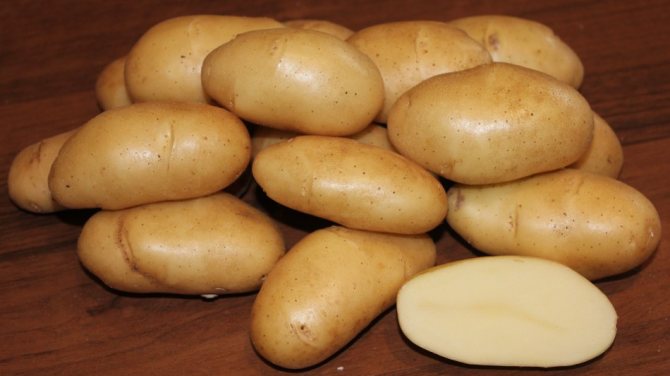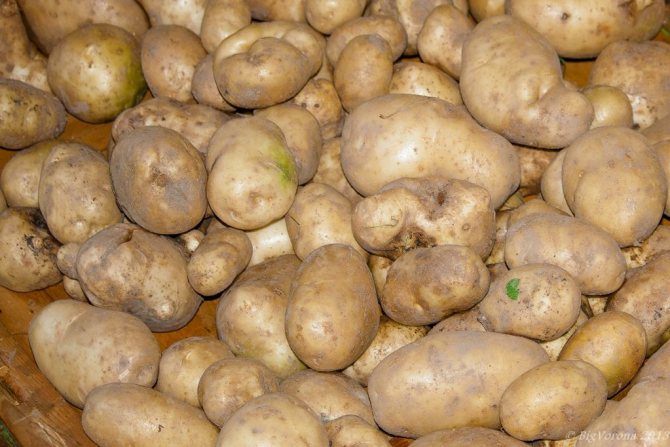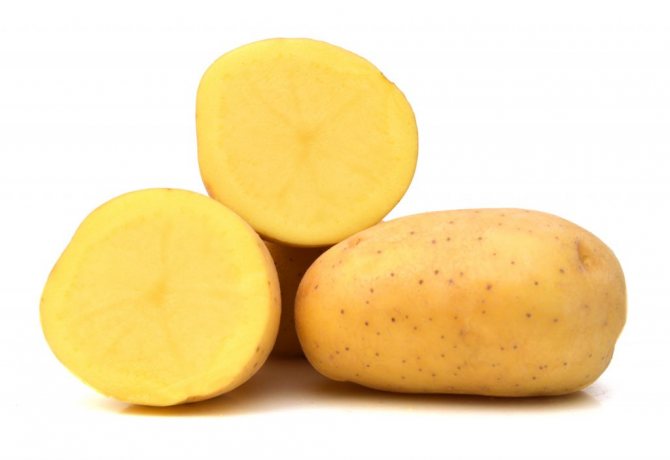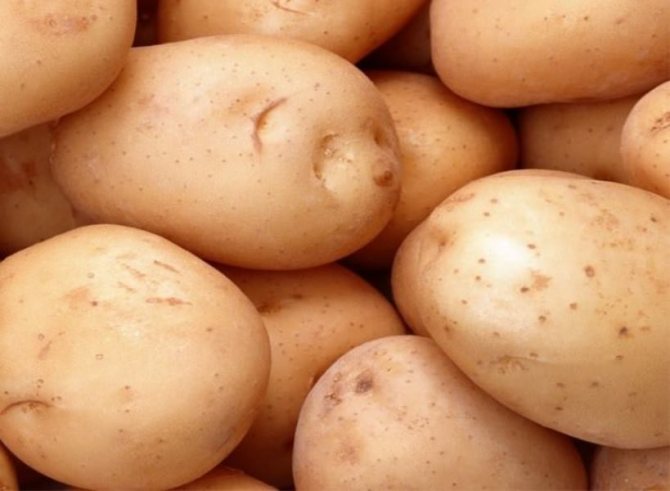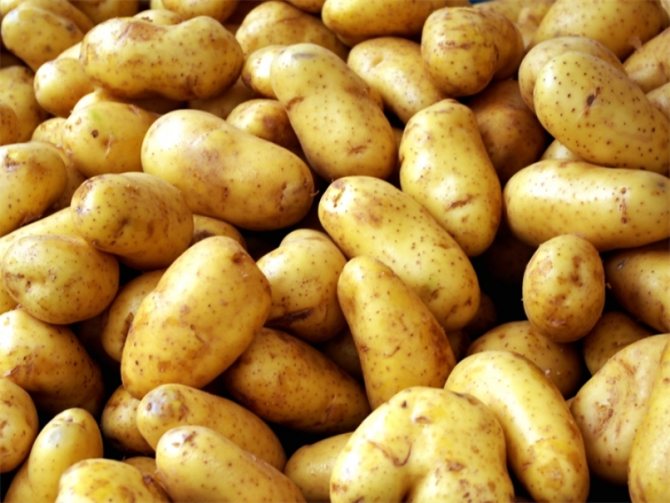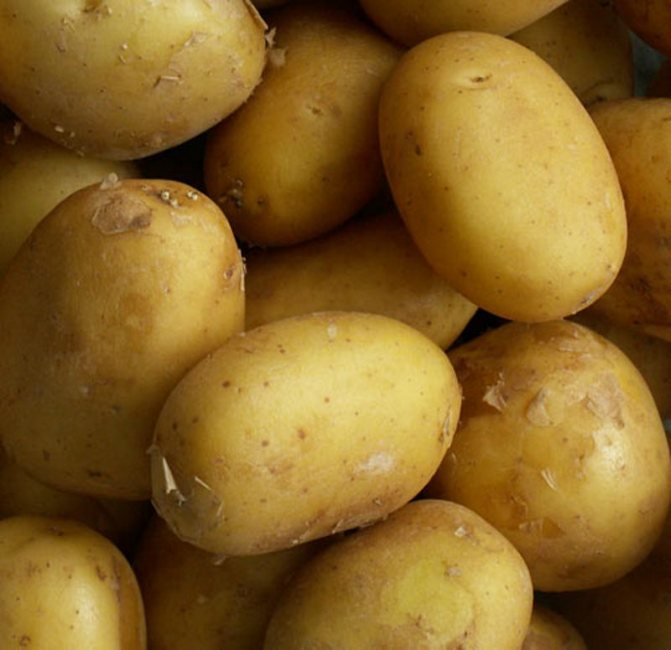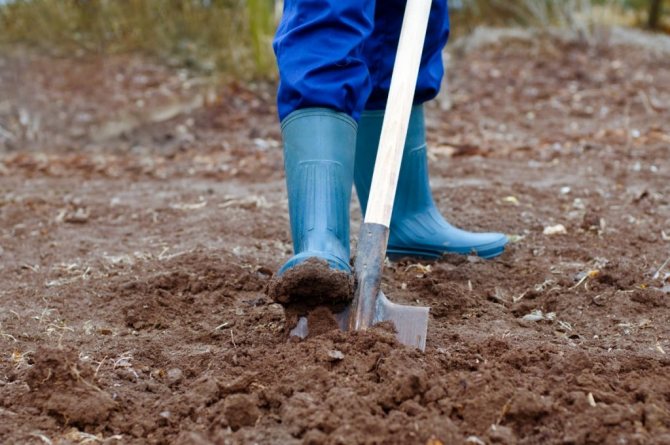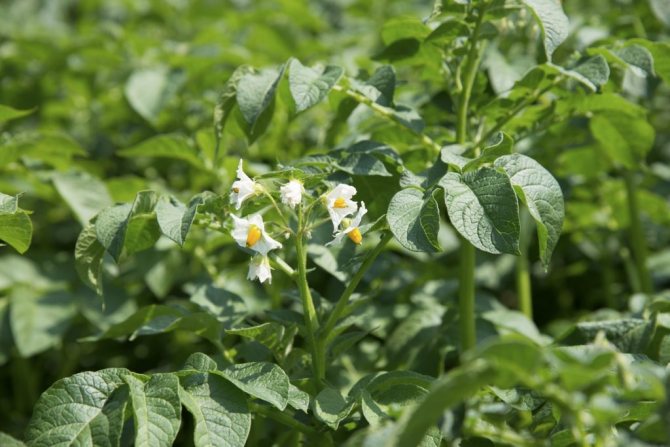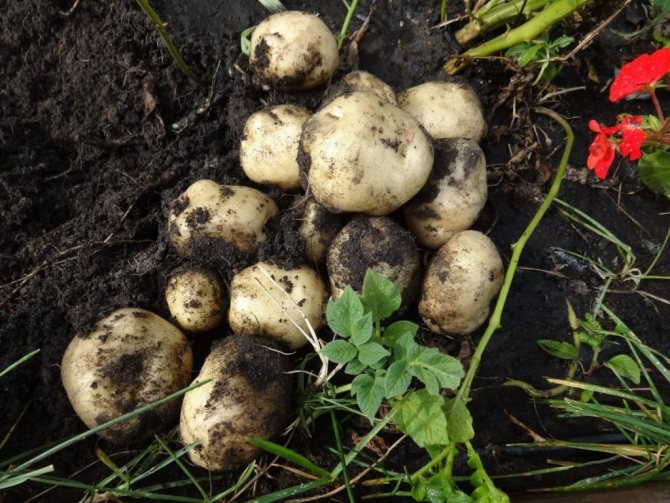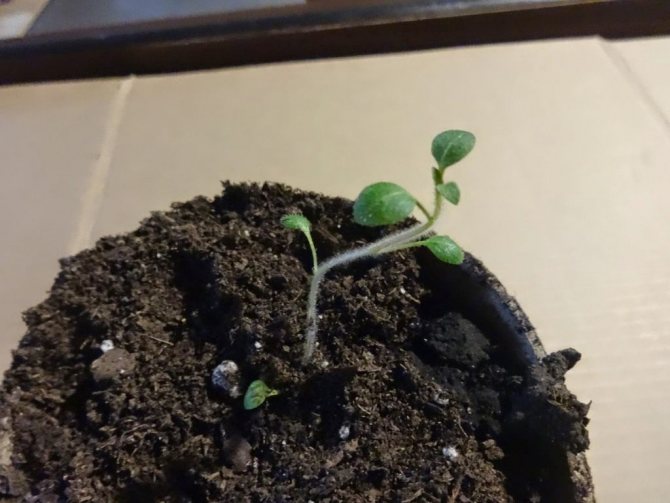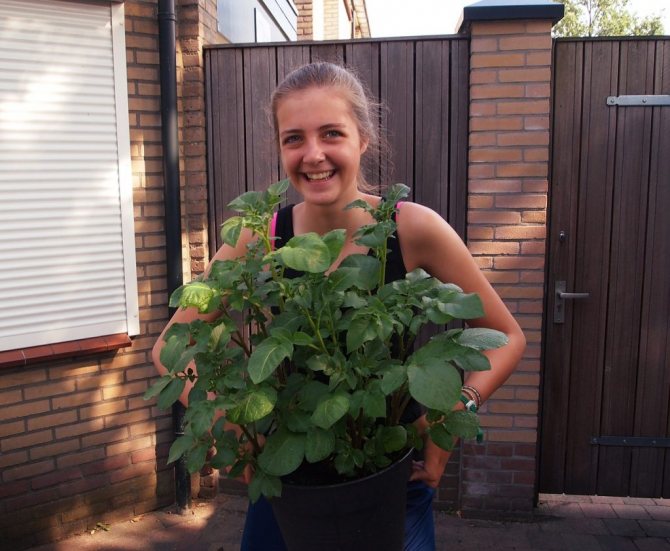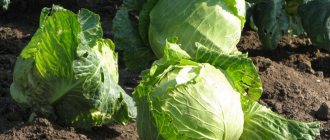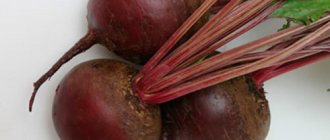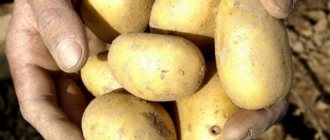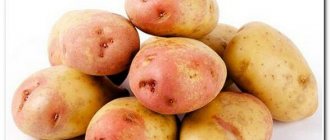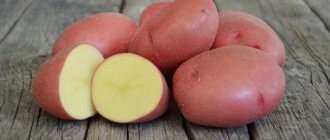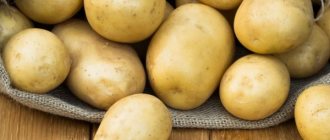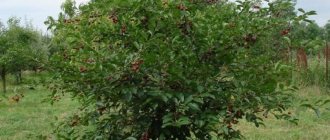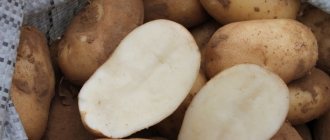Vegetable growing »Potatoes
0
945
Article rating
If you are a true connoisseur of potatoes, then you will be delighted to appreciate Triumph potatoes. This potato does not require any special care, so it is quite easy to grow it. But, at the same time, it gives a great harvest. This potato variety ripens early and has a unique flavor. It is for this reason that all gardeners and gardeners appreciate it. You will be satisfied with the yield of this root crop, regardless of the region of your residence.
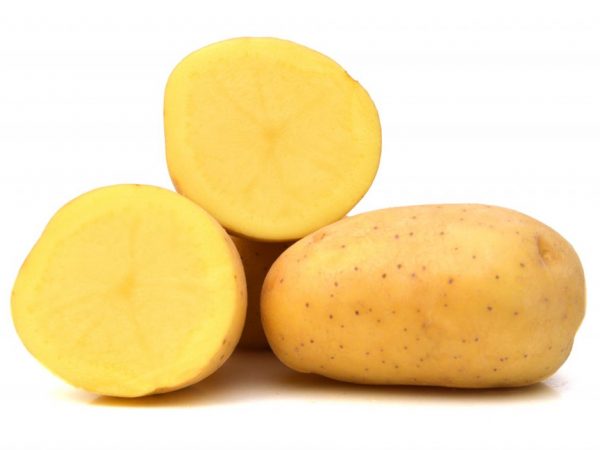
Description of potato Triumph
Description of early varieties
Of all the 4,000 potato varieties, the early ripening crops are easy to care for, high yields and good taste.
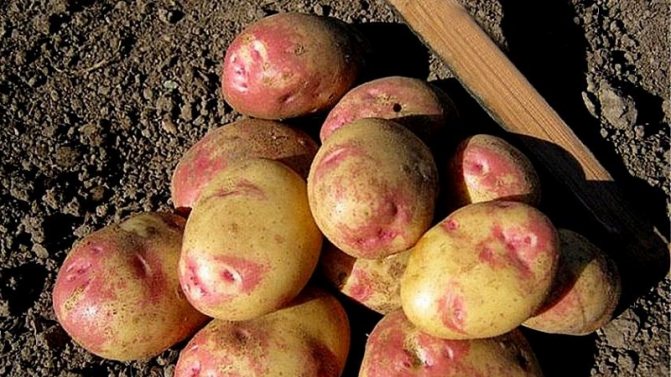

Orchid
The variety was bred by Belarusian breeders.
The plant is tall with an erect stem covered with medium-sized bright green leaves. Flowers are white, collected in medium-sized inflorescences. The ripening period of tubers is 70–90 days.
Productivity is high: 8–12 round tubers with small eyes ripen on 1 bush. The average weight of a vegetable is 150 g. The pulp is yellow, it contains 16.6–21.5% starch, which gives a good digestibility and excellent taste. Potatoes do not darken during heat treatment and slicing. Provided storage conditions are observed, it has good keeping quality.
The variety is resistant to nematode, black leg, wet rot, scab and late blight of tubers and tops.
Suitable for growing in the Middle Volga, Central, Central Black Earth regions.
Assol
This is an early maturing high-yielding variety bred by Russian agricultural technicians. Suitable for growing in private plots.
Spreading bushes, erect stems, medium leaves, white flowers. Tubers are smooth, elongated-oval, covered with a smooth yellow rind. The average weight is 100 g. The pulp is tender, creamy, the taste is good.
The growing season is 50–65 days. Up to 15 tubers are formed on one bush. The plant is resistant to late blight and viral diseases.
The variety is highly resistant to unfavorable climatic conditions, therefore it is suitable for cultivation in all regions of the country. Tubers retain their taste until spring.
Typhoon
Polish early ripening variety. The bushes are large, well developed, with a large number of leaves of a rich green color. The flowers are white, collected in large inflorescences. Tubers are oval, smooth, covered with a thin yellow rind. The pulp is tender, firm, yellow or creamy. The eyes are shallow, small in size. One vegetable weighs from 100 g. 6-10 potatoes ripen on a bush. The starch content in them is 16–20%.
The variety is drought-resistant and unpretentious to the composition of the soil. It has strong immunity. Subject to the rules of agricultural technology, it gives a rich harvest. Culture is grown not only on personal plots, but also on farms. Vegetables do not lose their flavor during storage.
Typhoon is recommended for cultivation throughout Russia, Ukraine and Moldova.
Estrella
An early ripe table variety bred in Germany. In 2011 it was included in the State Register of the Russian Federation.
Bushes are semi-erect or erect, of medium height.The stems are covered with small bright green leaves with wavy edges. Inflorescences are medium-sized purple-pink, inside the color is more saturated. The tubers are oval, the average weight is 88–115 g. 10–12 vegetables are formed on the bush. Marketable yield - 214–375 kg / ha.
The flesh and rind are yellow. The eyes are small, superficial. The starch content is low, 13-14%. Keeping quality is 95%.
Important! The variety is resistant to high temperatures, tolerates dry conditions well. With proper care, it gives a high yield.
Estrella is immune to potato cancer, nematode, banded and wrinkled mosaics. The culture is susceptible to late blight and leaf-rolling virus. Recommended for growing in the North-West, Central and Volga-Vyatka regions.
Lady Claire
Dutch mid-early variety... The bushes are low with straight shoots not prone to lodging. The leaf plate is large with a wrinkled surface and wavy edges, colored dark green. The flowers are white, do not form berries. The growing season is 65–75 days.
Tubers are even, oval, weighing 82–107 g. The rind is dense, thin, yellow. The eyes are small, superficial. The pulp contains up to 16% starch, carotene and vitamin C. Potatoes taste good: they have a lot of dry matter and little water.
Up to 12 vegetables are formed on 1 bush, the yield is 140-167 c / ha. Keeping quality - 94%, vegetables are stored for up to 6 months, while retaining their taste and presentation. Potatoes tolerate transportation well, they are not afraid of mechanical damage.
The variety is not affected by diseases and pests (except late blight) tolerates a lack of moisture and heat well. Suitable for cultivation in a greenhouse and open field, in private plots and large farms. Zoned for the Central, North Caucasian and Central Black Earth regions.
Borovichok
An early ripe variety bred by Russian breeders. The bushes are compact with erect, non-spreading shoots. Leaves are medium with uneven edges, painted in dark green color. The flowers are medium-sized, cream or white, quickly fall off, a small number of berries are tied. The root system is powerful, forms up to 10 rather large tubers. The period of full maturation is 70–90 days.
Vegetables are dense, regular round, resembling mushrooms in appearance. The rind is thin but firm. The pulp is tender, contains a large amount of starch and dry matter. The taste is rich, during heat treatment the vegetables retain their shape.
Important! The spring crop yields many non-marketable tubers, which are reduced in number when grown in early summer.
The variety is rarely affected by viruses, potato cancer, verticillosis, nematode, scab, late blight. With high humidity or improper watering, gray rot develops.
The tubers are stored until spring, are not damaged during mechanical harvesting, and they tolerate transportation well.
The culture is grown on an industrial scale and for personal use in warm and temperate climates. In regions with early spring, Borovichok produces 2 crops per year.
Velina
Very early productive variety. Vigorous bushes with straight, compactly spaced shoots. The leaves are bright green, medium in size with well-traced veins and uneven edges. White flowers are collected in neat inflorescences.
Tubers are medium or large, slightly elongated. The peel is smooth yellow. The eyes are shallow and small. The pulp is tender, creamy, has a rich taste, contains a balanced amount of starch, dry matter and moisture, suitable for dietary and baby food.
The tubers ripen for 50-60 days. In regions with a warm climate and early spring, the first crop is harvested after 40 days. Up to 15 potatoes ripen on 1 bush. The average weight of each is 90–100 g. The variety is resistant to nematodes, viral diseases and potato cancer.It is susceptible to attacks by Colorado beetles, and with an excess of moisture, it is affected by late blight.
Tubers retain their taste and presentation for a long time. Plants are undemanding to soil, resistant to adverse weather and climatic conditions, therefore they are suitable for growing throughout Russia.
For the middle lane
The climate of central Russia is characterized by high humidity and severe snowy winters. Summer temperatures are set at the end of May and remain until the end of September. That is why gardeners here choose varieties that ripen before the autumn cold.
High air humidity and fertile soil allow you to get a good harvest of early potatoes, which is characterized by a short growing season and immunity to most diseases: late blight, scab, mosaic virus, black leg, gray rot, rhizoctonia.
Important! For cultivation, crops are chosen with good keeping quality, resistance to rotting and mechanical damage.
Early potato varieties for central Russia:
- Adretta;
- Rosara;
- Pogarsky;
- Kamensky;
- Bellarosa.
When to plant potatoes
For a good harvest, you need to correctly determine the variety of potatoes. There are species that take root only in a certain area with a characteristic climate. As you already know, all varieties are grouped according to early maturity. Based on this, the timing of planting seed potatoes is determined:
- Early potatoes are planted in early April. Harvesting is possible on average after 55 days, but these varieties are not suitable for storage.
- Medium early potatoes. Also planted in April. Dig out the harvest after 60-65 days. But there is one small nuance in planting this variety - you need sprouted seed potatoes.
- Mid-season can be planted from April to May. Ripening occurs in early August. For this, potatoes need 85-90 days. Tubers of these varieties must be treated against diseases and viruses.
- Medium and latest varieties. This species is planted from May to June. It takes 120 days to ripen such a crop. Such potatoes are harvested at the end of September.
To get a good harvest, many gardeners plant several varieties of potatoes at once, which will ripen gradually, for food and storage. It is not recommended to plant this crop until the soil temperature reaches 8 degrees above zero. The optimum depth for planting in the spring is no more than 10 cm.
Advantages and disadvantages


The main advantages of early potato varieties:
- high productivity;
- short growing season;
- unpretentious care;
- disease resistance;
- good taste;
- the ability to give two harvests under favorable climatic conditions.
Among the shortcomings, a short shelf life is noted (such tubers will not survive until spring).
Each variety has its own pros and cons:
| Variety | Dignity | disadvantages |
| Orchid |
| With an excess of fertilizer, the tops grow quickly. |
| Assol |
| Not. |
| Typhoon |
| Not. |
| Estrella |
| It is affected by late blight. |
| Lady Claire |
| Not. |
| Borovichok |
|
|
| Velina |
|
|
Features of planting and growing
The rules of agricultural technology for early potatoes do not differ from the methods of growing late varieties, but they have some peculiarities.
Preparing for landing
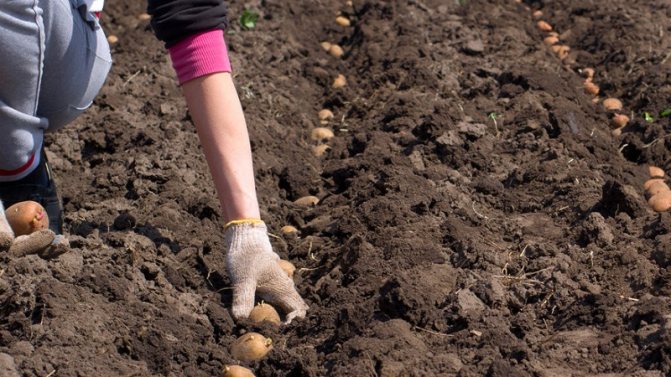

How to grow early potatoes? For planting in open ground, seed is pre-prepared... Choose tubers that were stored in the basement, without buds and sprouts. Small and sick specimens are not used.
Potatoes are placed in a warm room, after making a circular incision on each vegetable. Tubers are germinated for 20-30 days at a temperature not higher than + 10… + 15 ° C. At higher values, the sprouts will stretch out and become brittle.
Attention! To accelerate germination, the seed is placed in a container with wet sawdust or peat, after pretreating it with a growth stimulator ("Epin"), a weak solution of potassium permanganate or copper sulfate.
Ground requirements
To get a high yield of early potatoes and to reduce the ripening time, a sunny area with well-drained and ventilated soil is allocated for the beds.
The culture prefers fertile sandy loam, loamy soil or black soil. Clay soil does not allow air to pass through well and retains moisture, which leads to the development of rot and damage to the culture by late blight.
To improve fertility, the site is prepared in the fall. The earth is dug up, weeds are removed and wood ash, humus and organic fertilizers are applied. Before planting, the beds are re-dug up and mineral fertilizing is applied.
Timing, scheme and landing rules
Early varieties of potatoes are planted when the soil warms up to + 10 ... + 15 ° C at a depth of 8–10 cm. Sowing is not delayed, since sprouted tubers are resistant to low temperatures. Usually, planting dates fall at the end of April - beginning of June. It depends on the region and weather conditions.
The beds are located in the direction from south to north... Peat, wood ash, onion husks or humus are preliminarily introduced into the holes. Tubers are laid to a depth of 6 cm at a distance of 30–35 cm from each other, 60–70 cm are left between the beds.
To speed up the emergence of seedlings, plantings are covered with plastic wrap or other material. For air circulation in a staggered manner, holes are made at a distance of 15–20 cm. When the threat of frost has passed, the film is removed.
Growing features
The most favorable for culture are open, well-ventilated sunny areas. The beds are not placed on the north or east side, in a lowland with clay soil.
Green manures are used as precursors - cereals or legumes.
Potatoes love light. Lack of sun slows down the formation of bushes and reduces the number of tubers. Under normal light, the plant height is 50–70 cm, the root system is powerful and located in the fertile layer.
For flowering plantings, the air temperature should not exceed + 20 ... + 23 ° C, otherwise the flowers will fall off. Tubers are formed at + 16 ... + 18 ° C. Even small frosts lead to the death of plants.
Nuances of care
Early varieties of potatoes are unpretentious in care. After the emergence of seedlings, the plants are protected from frost, watered, loosened, weeded, spud and fertilized in time.
Particular attention is paid to the prevention and control of diseases and pests.
Watering mode


Before budding, the plants are not watered, after which the soil is kept moist. The plantings are irrigated once every 3-5 days, in the morning or in the evening, using warm water. Before harvesting, the amount of moisture is reduced.
In dry weather, the culture is moistened twice during the season, do it drip or under a bush.After watering, the beds are loosened.
Top dressing
During the period of plant development, root and foliar dressings are applied. If the tubers are planted in prepared soil, then fertilizers are used after the first shoots appear. 3-4 feeding is carried out during the season.
Due to the short growing season, early varieties do not have time to stock up on organic matter, therefore, formulations containing dolomite flour, nitrogen, phosphorus and potassium are used.
Mineral agents are applied depending on the condition of the soil and the nitrogen content in it. With its shortage, fast-acting nitrogen-containing fertilizers are used.
Important! When growing potatoes Borovichok mainly use phosphate, potash and organic fertilizers. Velina is fed with humus, compost, herbal infusion or diluted bird droppings. Fertilizers are applied 2-3 times: after the emergence of seedlings and during the formation of tubers.
Weeding and hilling
Before emergence, the soil is loosened and weeded carefully so as not to damage the shoots. In the future, this is done after each watering to provide the roots with oxygen and nutrients, and remove weeds.
The culture is spud after rain or watering. This creates additional support for the bushes, stimulates the development of the root system and creates the necessary supply of moisture. The procedure is carried out twice a season: when the bushes reach 15–20 cm in height and after 2 weeks, before flowering.
Disease and pest control


Most of the early varieties are resistant to diseases and pests, but some are affected by late blight, cancer, scab, gray mold, rhizoctonia, macrosporiosis, and brown spot.
For the prevention of diseases, the drugs "Shirlan" and "Ranman" are used.
When growing Lady Claire, Typhoon, Borovichka, for the prevention of late blight, twice during the planting season, they are sprayed with a solution of copper sulfate.
Against Colorado beetles, wireworms and larvae of May beetles use insecticides: "Aktaru", "Tabu", "Corado", "Commander", "Prestige". The insects are collected by hand.


Seed potatoes. We plant mini-tubers. Season 2020 Part 2
Potatoes in boxes under straw
The main problem that needed to be addressed in 2020 was the lack of space for planting mini-tubers. The main planting potatoes took their place in the boxes. I planted the old Adretta on the territories "attached" behind the site (as always, for the last time!))). Well, the children will come ...
"Adretta" behind the site Divided the mini-tubers into 3 parts according to the size of potatoes, with difficulty found a place for them. 2 places next to "Adretta", and the third was artificially poured near an apple tree and 2 gooseberry bushes next to the bathhouse. We have long wanted to add soil in this place. The land itself began to carry on a wheelbarrow from the forest, that for the potatoes, he always helps us with a neighbor. My husband looked at my activity and took matters into his own hands. But then I realized that I needed to attach some Romanesco cabbage and early Savoy Nyusha. She seemed to share the seedlings, but still a lot remained. As a result, I "attached" cabbage, and between them the smallest potato tubers from last year's seeds. And "Romanesco", and potatoes, and Savoy
I thought that we would eat cabbage before harvesting the "rich" crop of potatoes ... I thought in vain. "Romanesco" began to turn into "banana" thickets.
Everything started to grow. This is a lowland, and it is necessary to raise it, but the hands, as they say, “did not reach”. Behind the "cucumber finder" is a semicircular bed with "Romanesco", "Nyusha" and the tested potatoes.
The next part of my story about how I grew potatoes from seeds may well be titled like this: "The potatoes are tasty, lean, fruitful"... A well-stored, disease-resistant, rich crop is already very suitable for animal feeding and commercial purposes, on the market, in our opinion. On one of the farm sites I met a heated discussion of varieties, for my loved ones they advise, without hiding, some, and others for sale.Therefore, the main selection criterion for placement on a kind of "ladder of honor" chose the taste of tubers, since they are grown for the family table.
2020 seed potatoes
March 2020 has arrived. I begin to prepare potatoes for planting: I take them out of the basement, put them in one layer in small plastic boxes with holes (usually such boxes are used to transport champignons, as well as greens). In hardware stores there are also large, strong ones, but the light penetrates better through the former.
Harvesting and storage
The growing season for early potatoes ends in early August. In areas with a cold climate, crops are harvested before the first frost.
Harvesting begins after the potatoes are fully ripe, on a warm sunny day. 7-10 days before the start of work, the tops are mowed. Dig with a pitchfork to damage the tubers less. The potatoes are dried in the sun, then moved to the shade. The procedure is repeated within a week.
Important! Vegetables are dried in the open air, protected from direct sunlight, otherwise the vegetables will turn green.
The potatoes are sorted, laid out in bags or boxes, and put into the cellar for storage. To increase the shelf life, they are treated with special agents: "Baktofit", "Fitosporin" or copper sulfate.
The varieties Assol, Borovichok, Typhoon, Orchid, Velina have keeping quality up to 94-95%, so they are kept in the basement at + 2 ... + 5 ° C for 4-5 months.
Care rules
Assol potatoes show a high yield, subject to agricultural technology and the implementation of competent, timely care:
- about ten days or two weeks after planting the tubers, weeding should be performed, followed by hilling or loosening the row spacing;
- three weeks after the emergence of shoots, it is recommended to carry out preventive spraying of potato tops from late blight and the Colorado potato beetle;
- with an insignificant amount of such a pest as the Colorado potato beetle on plantings, it is advisable to replace the use of chemicals with manual collection of parasites;
- during a drought, irrigation measures should be carried out, filling the recesses in the aisles with water;
- with overdried soil, irrigation is carried out at least three times a month using a large amount of water.
Further care for potato plantings consists in carrying out several fertilizing with slurry or bird droppings, weeding and timely hilling of plants.
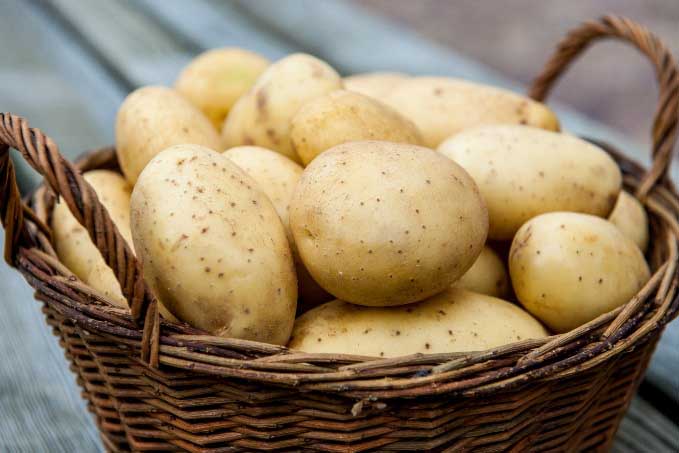

Harvesting is the most time consuming job in potato growing. The quality of the harvesting of potatoes largely determines the volume of the crop and the indicators of keeping quality of tubers at the storage stage.
Growing difficulties
When growing a crop, gardeners face some problems:
- Lodging of tops. It occurs due to an excess of moisture, a high content of nitrogen compounds in the soil, a lack of light, or the use of large planting material. To eliminate the problem, crop rotation, irrigation and mineral fertilization regimes are observed.
- Lack of colors... This is caused by a lack or excess of moisture, the use of low-quality seed material, a violation of planting dates, and pest damage. For cultivation, only healthy tubers are chosen, fertilizers are applied in a timely manner, the bushes are watered during the dry period, the plantings are regularly weeded.
- Yellowing and drying of the tops. Often occurs due to infection with viral or fungal diseases, high air humidity. Sick bushes are removed, the site is treated with copper sulfate. With an excess of moisture, the amount of watering is reduced, the soil is more often loosened.
Tips and Feedback
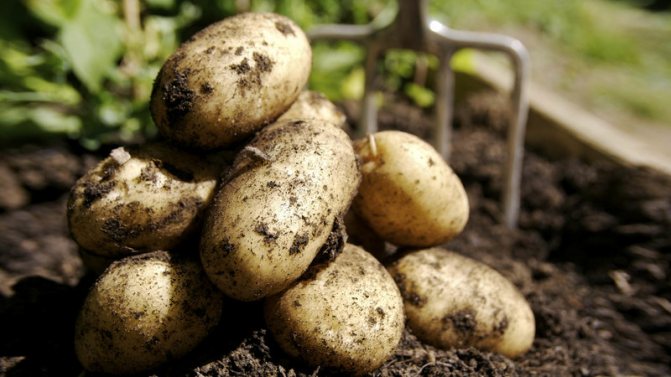

Growing Secrets from Experienced Farmers:
- several early varieties are planted on the personal plot;
- before planting, tubers are treated with growth biostimulants or a solution of mineral fertilizers: succinic acid, Epin, SILK preparations.
Many gardeners speak positively about early potato varieties: they note their yield, unpretentiousness, excellent taste of vegetables:
Sergey, Astrakhan: “Borovichok did not find any flaws in potatoes. Tubers are even, smooth, of the same size. I grow the culture on loose, sandy loam soil. I land in mid-April. If the summer is not too rainy, I harvest twice. Tubers are tasty, well boiled, stored until spring. I use my own seed for planting in the new season. "
Elena, Novosibirsk: “I have been growing early Orchid potatoes for several years. We begin to dig in 1.5 months after planting. Vegetables with yellow flesh, non-watery. The yield is high, the taste is excellent. We use tubers for baking and boiling. "
Evgeny, Ryazan: “Of the early varieties of potatoes, I prefer Assol. The culture is unpretentious in care, grows on any soil. Tubers grow large, neat with small eyes. The pulp is tender crumbly. "
How to choose the right seed potatoes
When choosing seed potatoes, you need to carefully consider the appearance of the tuber. The correct potatoes should look like this:
- The tuber should be the size of a chicken egg, but you can take a little larger.
- There should be no damage.
- Potato seeds should be disease-free.
- Potatoes that have already sprouted are allowed for planting. This will help him to ascend faster.
It is also worth calculating the number of seeds correctly. It is customary to take about 20-30 kg per one hundred square meters of land. If the potatoes are too large, then they are divided in half before planting. So, if you figured out the quantity, it is worth considering all the most famous varieties, their features and characteristics.


